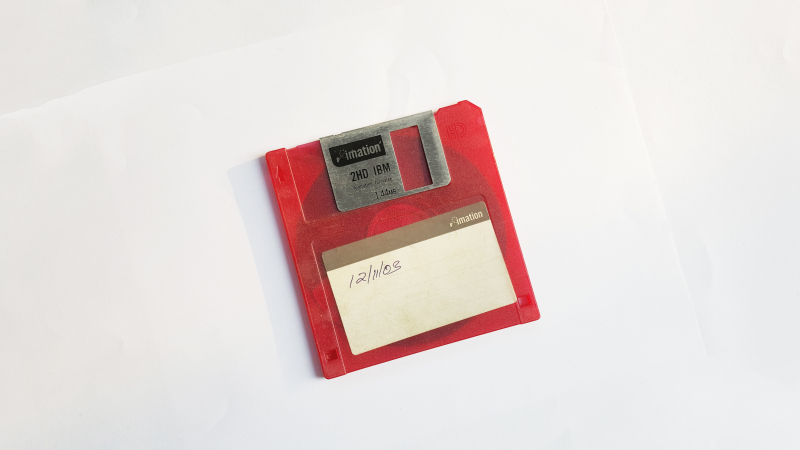Arguably one of the most popular metaphors for memory is the “mind as an attic”, coined by none other than Sir Arthur Conan Doyle to describe Sherlock Holmes’ approach to keeping his mind clear of unnecessary clutter (or useless facts). And generally we do tend to envision our memories stacked in a sort of vault or library, static and devoid of any external influence. Thus, as the metaphor goes, they remain unchanged and our job is to find a path to them, to navigate this stationary library – and then the books (files, CDs, however you prefer to see them) will be at our disposal. While there are still few things we know for certain about memory, we can safely say that this is not the best way to envision the way it’s organized.
One of the alternatives was suggested by Ulric Neisser, one of the founding fathers of modern cognitive psychology. He posited that remembering was an active process akin to an archeological excavation – each time we try to remember something, we reconstruct it from scratch, from pieces of evidence, if you will, left in different places around our brain. Then, our memory presents itself as an ecosystem, constantly evolving and open to change by the act of “excavation” itself.
Credit: Sebastian Herrmann (@herrherrmann) on Unsplash.com
Interestingly, the susceptibility of memory to external influences was suggested and successfully demonstrated by the Cambridge experimental psychologist Frederic Bartlett back in the 1930s. In his experiments, participants read a story, War of the Ghosts, and then were asked to recall it at various intervals. Naturally, the longer the intervals, the less accurate and confident in their stories were the participants. What was more important, however, is that the participants tended to change the details of the story that didn’t match their own schemes or representations of the world around them. See, War of the Ghosts is an exemplar of the Native American folklore and thus many of its aspects were unfamiliar to the English participants of the study – thus, for example, canoes became boats.
Another entertaining illustration of how our memories are modified by what we believe is an experiment conducted in 1980, in which the participants also listened to a story – one about a couple who was about to get married, but one of the partners wished to remain childless and was anxious to announce it to the other. There were two alternative versions of the story – with two different reactions of the second partner to this unexpected piece of news (they either agreed or disagreed on the matter). The participants were then told that the couple either married or decided to stay apart. The trick was that sometimes their marriage followed an agreement and sometimes it came after they’d fallen out. So, when the participants were later asked to recall the story, they tended to come up with additional details that would make either ending more plausible – by saying that the couple first disagreed but then decided to stay together for their love was more important, or that their parents had a say in the matter. This peculiar way of remembering was only observed in those participants who had an illogical story to reconstruct – the one, for example, where the couple married after a disagreement on the children issue.
Credit: Rae Kearney (@raebear_27) on Unsplash.com
Now, if we were to believe that all the information we receive is stored in an unchanged form somewhere in our brain, like the attic metaphor would suggest, then we would have to posit that those poor participants simply heard “boats” instead of “canoes”, or somehow got more information from the marrying couple story than there originally was, – so the problem was not in the lost access to recollections of the story but, well, on the receiving end. This, however, doesn’t sound plausible, as the participants’ normal sight and hearing are usually accounted for. This leads us to suggest that even if all of this once-received information is stored unchanged, the way we reconstruct it – or what we recall of it – is modified by something else, in this case, our knowledge of what is common in the world around us. Objects most known to us or explanations most fitting our worldview come to mind first, or more easily than those that were actually there. And we’re stuck in a rather tricky predicament.
Before you start panicking and questioning every memory you have, however, I have some good news for you. First of all, apart from being an alleged “flaw”, this memory trait ensures that you don’t go crazy with all of the conflicting bits of information you encounter. Second of all, luckily, while some scientists try to find the faults in the way human memory works, others are drawn to the unique cases of mnemonists – those whose memory is seemingly flawless, which makes them capable of recalling large amounts of various data: from the digits of pi to random cards in decks. And it is by studying these extraordinary people that researchers have discovered the ways we can record (or encode) information so that we remember it for a long time and in full.
Credit: Nathalie (@sim_sala) on Unsplash.com
The tricks here are rather simple.
First, you need to be attentive to and engaged in the thing you are trying to remember – say, a topic from a student’s book. What you are reading has to be processed and understood in order for it to be (and that is step two) integrated into what you already know about the world.
Essentially, you’re doing what your memory does – make the information your own by placing it inside your existing knowledge. For a mnemonist trying to memorize the digits of pi, this might mean associating every digit with a letter and then turning those letters into words making up a story, which would then be used to recall the digits. With larger bits of information, like facts or formulas, however, other methods can be used, like, for example, the method of loci (also known as “the mind palace” and also made popular by Sherlock Holmes) – you imagine your room or a space you know and assign pieces of information to objects in it. Later, when you need to recall them all you have to do is envision your room again and “collect” the facts “pasted” on the wardrobes, posters and shelves around you.
Lastly, to be able to access this well-processed and integrated information quickly, you need to practice both storing it in this way and reassembling it. The more you do it, the easier it will be to apply your mnemonic technique of choice to any material you need to remember.
So, while our memory may be constantly evolving and shaping our recollections to fit our beliefs, there is still a way for us to get the upper hand and ensure that we never forget what’s most important.




